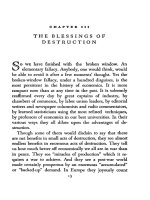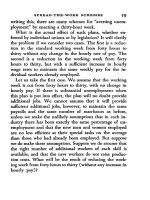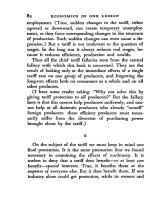The smartest investment book youll ever read the simple, stress free way to reach your investment goals
Bạn đang xem bản rút gọn của tài liệu. Xem và tải ngay bản đầy đủ của tài liệu tại đây (8.54 MB, 202 trang )
The
Smartest
Investment
Book
You'll Ever Read
The Simple, Stress-Free 'Nay
to each Your Investment Goals
Daniel R. Solin
VIKING
CANADA
VIKING CANADA
Published by the Penguin Group
Penguin Group (Canada), 90 Eglinton Avenue East, Suite 700, Toronto, Ontario, Canada
(a division of Pearson Canada Inc.)
M4P 2Y3
Penguin Group (USA) Inc., 375 Hudson Street, New York, New York 10014, U.S.A.
Penguin Books Ltd, 80 Strand, London WC2R ORL, England
Penguin Ireland, 25 St Stephen's Green, Dublin 2, Ireland (a division of Penguin Books Ltd)
Penguin Group (Australia), 250 Carnberwell Road, Carnberwell, Victoria 3124, Australia
(a division of Pearson Australia Group Pty Ltd)
Penguin Books India Pvt Ltd, 11 Community Centre, Panchsheel Park, New Delhi - 110 017, India
Penguin Group (NZ), cur Airborne and Rosedale Roads, Albany, Auckland 1310, New Zealand
(a division of Pearson New Zealand Ltd)
Penguin Books (South Africa) (Pty) Ltd, 24 Srurdee Avenue, Rosebank, Johannesburg 2196, South Africa
Penguin Books Ltd, Registered Offices: 80 Strand, London WC2R ORL, England
Published in Canada by Viking Canada, a division of Pearson Canada Inc., 2006
Published in the United States by Perigee Books, a division of Penguin Group (U.S.A) Inc., 2006
While the author has made every effort to provide accurate telephone numbers and internet
addresses at the time of publication, neither the publisher nor the author assumes any responsibility
for errors, or for changes that occur after publication. Further, the publisher does not have any control
over and does not assume any responsibility for author or third-party websites or their content.
This publication contains the opinions and ideas of its author and is designed to provide useful
advice in regard to the subject matrer covered. The author and publisher are not engaged
in rendering legal, accounting, or other professional services in this publication. This publication
is not intended to provide a basis for action in particular circumstances without consideration
by a competent professional. The author and publisher expressly disclaim any responsibility
for any liability, loss, or risk, personal or otherwise, which is incurred as a consequence,
direcdy or indirecdy, of the use and application of any of the contents of this book.
2
3
4
5
6
7
8
9
10
(RRD)
Copyright © Daniel R. Solin, 2006
All rights reserved. Without limiting the rights under copyright reserved above, no part of this
publication may be reproduced, stored in or introduced into a retrieval system, or transmitted in any
form or by any means (electronic, mechanical, photocopying, recording or otherwise), without the
prior written permission of both the copyright owner and the above publisher of this book.
Manufactured in the U.S.A.
ISBN-IO: 0-670-06626-5
ISBN-13: 978-0-670-06626-1
Library and Archives Canada Cataloguing in Publication data available upon request
American Library of Congress Cataloging in Publication data available
Visit the Penguin Group (Canada) website at www.penguin.ca
Special and corporate bulk purchase rates available; please see
www.penguin.ca/corporatesales or call 1-800-810-3104, ext. 477 or 474
To hard-working Canadian investors: There is a better,
easier, less stressful way to achieve your financial goals.
I hope that the time you spend reading this book
will be the best investment you will ever make.
Contents
Introduction: We Me Different but We Are the Same
XIII
Part One
Become a Smart Investor:
Change Your Investment Life Forever
I
I. An Unbelievable Chimp Story
3
2. An Unbelievable True Story
5
3. Smart Investing Takes Less Time Than Brunch
II
4. Drop Me
13
[Q
the Bottom Line!
5. Smart Investing Simply Makes Sense
l7
Part Two
Your Broker or Advisor Is Keeping You
from Being a Smart Investor
21
6. Brokers Make Money When
T hey Are Hyperactive
7.
8.
9.
10.
A Loser's Game
Why Investors Pursue Hyperactive Investi ng
T he "Activity" Myth
What's Wrong with Hyperactive Investing?
II. Brokers Aren't on Your Side
12. Hyperactive Brokers, Underachieving Students
13. What Do You Think of T hese O dds?
23
26
29
34
36
39
42
44
Contents ix
14. Nobody Can Time the Market
48
15. Nobody Can Consistently Beat the Market
51
16. Nobody Can Pick "Hot" Fund Managers
55
17. Why Recommend This Mutual Fund?
18. Hyperactive Investing Is Expensive
58
62
19. If It Walks like a Duck and
Quacks like a Duck. ..
65
20. Brokers Understand Fees but Not Risk
67
21. Too Many Stocks, Too Few Bonds
70
22. Risk and Reward
73
23. Beware of House Funds!
29. "Financial Pornography"
77
79
81
84
88
91
94
30. Should Your Broker Act Only in Your
Best Interest and Be Careful with Your Money?
98
24. Beware of Margin!
25. Beware of Hedge Funds!
26. Value Stocks-Reward Without Risk?
27. Why Hasn't Anyone Told You?
28. The Financial Media Are Part of the Problem
Part Three
Smart Investors Know Better
103
31. Who Believes Me?
105
32. When Do Smart Investors Need an Advisor?
111
Part Four
The Real Way Smart Investors
Beat 95% of the "Pros"
117
33. The Four-Step Process
119
34. Step 1: Determine Your Asset Allocation
121
x Contents
35. Step 2: Open a Brokerage Account
and Purchase ETFs
37. Step 4: Rebalance Your Portfolio
127
129
132
38. What About Income Trusts?
134
39. Don't Back Down
136
40. Where Are the Pension Plans
for Smart Investors?
139
4 1. Have the Inmates Taken Over the Asylum?
141
42. The Smartest Investor Who Ever Read
an Investment Book
143
43. Too Good to Be True?
145
36. Step 3: Select Your Investments
Appendix B: Risk and Return Summary
171
179
Additional Resources
181
Acknowledgments
183
Index
185
Appendix A: Asset Allocation Questionnaire
Introduction:
We Are Different,
but We Are the Same
With understandable pride, Canadians celebrate their differences from their American neighbours. However, when it
comes to investing, the two countries are remarkably the same.
• Actively managed mutual funds in both countries are
aggressively marketed.
• Active managers in Canada have the same dismal record as
their American counterparts at beating an unmanaged
index of stocks, while charging higher fees for this underperformance.
• Hedge funds and other "alternative" investments are poorly
understood in both countries, leading investors to assume
risks that they neither understand nor can afford to take.
• Investors in both countries are under the mistaken belief
that investing is extremely complex and difficult, requiring
the services of brokers and advisors to provide the necessary
guidance.
• The brokers and advisors to whom investors turn for advice
in both countries are conflicted and often poorly trained in
basic principles of finance. As a consequence, they often do
more harm than good.
xU
Introduction
The reality is thar investing is quite simple and easy. The
vaSt majority of investors do not need any advice or guidance
from so-called investment professionals. Instead, in less than
90 minutes a year, most investors can select one of four basic
ponfolios and, based. on historical returns, are likely to beat the
returns achieved by 95% or more of professional money
managers.
Let me state it very bluntly: The road to financial perdition
begins with the call to your broker or financial advisor who
tells you he or she can "beat the markets."
Canadians would be far better off if they took control of
their own finan ces and never dealt with any broker or advisor.
PART ONE
Become a
Smart Investor:
Change Your
Investment
Life Forever
Chapter 1
An Unbelievable
Chimp Story
The investor's chiefproblem-and even his worst enemyis likely to be himself
-Benjamin Graham, The Intelligent Investor
There is a chimpanzee in a remote region of Sierra Leone that
routinely performs open-heart surgery. His success rate is
higher-and his mortality rate lower-than many of the finest
heart surgeons in the world.
Okay, I made that up.
But, if you read that report in the newspaper, you would
think that either
1. that chimp is really extraordinary; or
2. those heart surgeons are not very good.
If the story were true, and you needed a heart operation,
you might seek out the chimp and avoid the heart surgeons.
The Financial Times of London annually runs a contest,
pitting a neophyte investor against market analysts. In 2002,
4 Become a Smart Investor
a five-year-old London girl chose stocks randomly from 100
pieces of paper listing companies on the Financial Times
Stock Exchange. Her results were compared with those of a
top financial analyst and those of a woman who used the
"movement of the planets" to choose her portfolio.
Over a period of one year, the little girl won handily. Very
handily, as a matter of fact. Her stocks gained 5.8%. In stark
contrast, the portfolio of the professional analyst lost 46.2%.
The analyst was also bested by the financial astrologer, whose
stocks lost only 6.2%.
The little girl celebrated by going to McDonald's. I suspect
the analyst continued to dine at more expensive establishments.
There are some excellent peer-reviewed studies that
demonstrate that the stocks most highly rated by financial
analysts consistently underperform the market.
Those reports are fact.
Either the little girl is very good, the analysts are very bad
or the much-touted skill of stock picking is not something
that any smart investor would want to bet the farm on.
And the chimp? Well, he still doesn't perform open-heart
surgery.
Chapter 2
An Unbelievable
True Story
Most individual investors would be better off in an index
mutualfund
-Peter Lynch, former manager of the Fidelity Magellan
Fund, Barron's, April 2, 1990, p. 15
More than 50 million Canadian investors hold a total of
more than $550 billion in mutual funds. Most of this money,
and virtually all money held in individual stocks or in income
trusts, is invested the wrong way-by money managers who
engage in what I call "hyperactive management." Hyperactive
management is characterized by efforts to beat the market by
picking winners and timing the market. This is dumb money.
,,~+~'M()'Ey,roiANAGERS:arep~~fe§~i6@IS "Yho il1v~st'rnonay •..•
,'ss~
,~tnarkets ac~4~qirtg.to'.p~rticul~f criterla,Mcihey [;lanageria.rEl:
4;"ustially. palqbas~d()~ a.' percenta,ge.of Ih,e totall)lof!e};theYj
.IQ~srJnerefore,jf fheir.investmenfsmake money aAd the .
•JSol.;ofm!Jneythey
.invest
grows, SO does their in COQle.,
"
'
",
~,:,:,'?
,~
~'
6 Become a Smart Investor
In sharp contrast, trillions of dollars of assets of pensions,
foundations and university endowments in Canada and the
United States are invested the right way-by money
managers who seek market returns by investing in all of the
stocks and bonds in broad market indexes. This is smart
money.
Ironically, investing for market returns-being among the
smart money-is much easier than investing hyperactively.
• You don't have to pay any attention to the financial media.
• You don't have to sift though mountains of often-conflicting
and confusing information from self-styled experts.
• It is less expensive.
• The results are demonstrably superior.
• The vast majority of Canadian investors do not need the
advice of any advisor or broker.
• It should take you only 90 minutes or so a year.
Why then does such a gap exist between the investing strategy of smart money and the way most individual investors
invest? This is because most investors use financial consultants
employed by the major brokerage firms, banks or independent
financial advisors who earn commissions or fees for selling
financial products.
Virtually all of these brokerage-based financial consultants
and most independent financial advisors manage money using
dumb-money management techniques. They engage in
market timing and stock picking because doing so makes
them money.
An Unbelievable True Story 7
K~1fTI.l\,I1lfNG r~f~r~x!o thetsupP9sed ~1::lmt¥ tofQrecast '.
frr a \talley,~~ndt();.ptofit· .
Oerth~Fmar~~tisa';~.peak
#:t!1Orrf;~af predl.~lon,r;;\%~
j'~ ~
,
:;-.:~~j
~
',""1"
i~;$OC~~PlCkIN~·f~f~.ric$ to
suppos~a abjJityt~s~eleaf
J~~~6c~~;thaflretlll~ervar~e(fahd will otItpeiiorm the market
'i1~ d~er'1~0m~:;~tJtLlf~.fperi6a·oUime. . .'..
,. .
.
The Truth about
Dumb-Money Investing
Most financial advisors who work within this dumb-money
system believe they have the ability to choose stocks and
mutual funds that will outperform most other stocks and
mutual funds-at least, that is what they tell their clients.
Or, if they admit they can't time the market and pick stocks,
they tell their clients they can put their money with a money
manager who can do these things.
But there is little independent, peer-reviewed, scientifically
valid evidence that anyone can successfully engage in either
market timing or stock picking consistently over the long term.
In fact, all the evidence concludes that the opposite is true.
To be sure, every year some managers do "beat the market" by
beating their benchmark index. A few managers even do it for
many years in a row. But the number of managers who beat
the market is the number one would expect given statistical
probability. The fact that these managers beat the market is
not proof that they are better at what they do than others are.
They beat the market because of simple chance.
8 Become a Smart Investor
Financial consultants, money managers and mutual fund
managers who attempt to beat the market are engaged in
hyperactive management. I call these investment professionals
"hyperactive brokers and advisors" because that is what they
are.
Smart-money investors avoid those advisors and money
managers. They invest directly with index fund managers or
in Exchange Traded Funds (ETFs). They know that, absent
a lucky streak, the market return is really the best return.
You should invest this way, too-for market returns.
If you ignore this advice, you are doing yourself a huge
disservice. The securities industry adds costs. It subtracts
value. Advisors who counsel their clients that they can beat
the markets are assured of success in one area: transferring
money from their clients' pockets to their own.
An Unbelievable True Story 9
;i'Tfl~ SECURi,.1 ES.I NDlJ~TRYtsmadeUp. of the .Dr6k~r:-. ,
. age firms, .inv€l.stment bi!mk;~;. iMurance c:bmpflrHes a:nd;:~~'
()th~rs el}titiesJhat .devel?p,··p~ck;age anO·ma:[.I
ttE7s to raise capital fr€)moutsidein~estors·and,"or inH,,,,,,t,,.,r<:t>,'
to· seek;
"",,', investment returns.
:
'
'-,
Why Hyperactive Management
Is So Expensive
The biggest problem with hyperactive management is
expenses. They are so substantial that, when coupled with taxes
and other hidden costs, the odds of a hyperactively managed
portfolio beating the comparable market returns over an
extended period are very, very long.
The success of hyperactive brokers and advisors is really
not success in investing, but success in selling. Their success
in selling is based on five sacred beliefs, all of which are
untrue.
1. Hyperactive brokers and advisors can beat the markets.
2. Hyperactive brokers and advisors can time the markets.
3. Market timing and stock selection are really important.
4. The more expensive a product or service, the more valuable it must be.
5. Things that are exclusive or elitist are more valuable.
Theirs is a system that depends on its ability to convince
you, through the expenditure of hundreds of millions of
10 Become a Smart Investor
dollars of advertising, that you need to listen to these
"experts." You don't. Smart Investors don't give their money
to hyperactive brokers or advisors to do things that they can
do better themselves.
3
Smart Investing
Takes Less Time
Than Brunch
The first key to wisdom is defined, of course, as assiduous
and frequent questioning.
-Pierre Abelard, 1079-1142. Sic et Non, translated by
W.]. Lewis
So why is this the smartest investment book you'll ever read?
Because it is simple. It is understandable. It doesn't beat
around the bush and it doesn't pull punches. It tells you exactly
why you should call your stock-picking, market-timing, stockbroker or investment advisor today and tell him or her you are
taking control of your money.
You are moving your money where you can get superior
long-term returns without the hassle and worry you currently
have with your investments. You have seen the light-the light
of investing for market returns.
If that isn't smart, I don't know what is.
Brokers and investment advisors cannot beat market returns
over the long term.
12 Become a Smart Investor
They talk the talk, but they can't walk the walk.
There are hundreds of academic studies that demonstrate
this fact conclusively.
If investors knew this, they wouldn't use these brokers or
advisors. But the securities industry, assisted by the financial
media, perpetuates the myth that they are able to beat the
markets consistently over the long term, and they hide the data
that demonstrates conclusively that this simply is not true.
Investors of all stripes lose billions of dollars a year because
they don't understand that there is an easy, surefire way to
achieve market returns without using brokers or investment
advisors.
And achieving market returns is a big deal. That's because
there is ample data indicating that, over the long term, simply
achieving market returns will beat 95% of all professionally
managed investment portfolios.
Now that I have told you this secret, I am going to explain
how you can achieve market returns. It is simple, easy and not
expensive.
It will take you only a relatively brief time to read this book.
But it is an investment of time that can change your life.
Once you have read the book, it shouldn't take you more
than 90 minutes to implement the advice I provide. And,
after that, it shouldn't take you more than 90 minutes a year
to make sure your investment portfolio continues to be
structured the way you want it to be.
And you can do this yourself-you won't have to rely on the
advice of a broker or advisor whose financial interests are in
conflict with yours.
Now, if taking control of your financial life in 90 minutes
a year isn't smart, I don't know what is.
Chapter 4
Drop Me to the
Bottom Line!
More often (alas), the conclusions (supporting active
management) can only be justified by assuming that the
laws ofarithmetic have been suspended for the convenience
of those who choose to pursue careers as active managers.
-William F. Sharpe, Nobel laureate in economics, 1990.
"The Arithmetic of Active Management," Financial Analysts
Journal, vol. 47, no. 1, January/February 1991
The chart on page 14 is the bottom line. When you look at it,
keep in mind that the "low-risk" portfolio has the highest
percentage of bonds and the "high-risk" portfolio has the
highest percentage of stocks.
14 Become II Smart Investor
-
,
-
~
......"
STOCKS are ownership intecests (equity) in COnipanies.
After a company has paid all of its expenses for the year
(including taxes and interest on debt), the remainder
belongs to the owners. The total money left divided by
the number of shares of stock outstanding is known as the
earnings per share (EPS). This EPS can be reused by the
company for growth or can be returned to stockholders,
either as dividend; or through a repurchase of the stock by
the company. The price of a share.- of stock increases or
decreases in relation to the value p0tential investors put on
it when they analyze the company's prospects fof continuing to earn more than the company's costs in the future.
FOUR MODEl PORTfOLIOS
(Data PeriDd: 19n-2005)
Worst SiRDle Calendar Ym lllSS AVBrngB Anooal Return
•
I
I
I
-
Drop Me to the Bottom Line!
15
In less than a minute, you will understand the long-term
historical returns and risks of the four portfolios that are
suitable for the vast majority of investors. You can quickly
compare the differences in returns and the differences in risk.
The following chart tells you the names of the ETFs, and
the correct percentage of those ETFs, that you should
purchase for the portfolio that you determine is the right
one for you.
COMPOSITION OF FOUR MODEL PORTFOLIOS
FUND NAME
lOW
RISK
MEDIUM·
lOW RISK
MEDIUM·
HIGH RISK
HIGH
RISK
iShares CON Composite Index Fund (XIC)
2%
4%
6%
8%
iShares CON S&P 500 Index Fund (XSP)
10%
20%
30%
40%
iShares CON MSCI EAFE Index Fund (XIN)
8%
16%
24%
32%
iShares CON Bond Index Fund (XBB)
80%
60%
40%
20%
100%
100%
100%
100%
These ETFs are all traded on the Toronto Stock
Exchange. You can find more information about them at
/>As I will explain, ETFs replicate the returns of all of the
stocks in a specific segment of the market. For example, an
S&P 500 ETF replicates the returns of the stocks of the 500
widely held companies that make up that index. In this way,
without trying to time the market or pick a stock winner, this
ETF will always match the returns of the stocks of those 500
companies, less the very low costs of the ETF and commissions
incurred in buying it.
16 Become a Smart Investor
A MARKET is a mechanism by which potential buyers
and potential sellers of items can be matched. In the
world of stock and bond investments, some markets are
physical while others exist only as computer-to-computer
interchanges.
--
The overwhelming academic data indicates that investors
who fo llow this advice will beat the returns of 95% or more of
actively managed mutua1 funds over the long term.
No advice needed from brokers o r advisors.
No worry. No Stress.
But I know that some of you will not believe me. It juSt can't
be this easy. You may even be skeptica1 about some of the data
I discuss in this book. You can check the sources for a11 data by
reading Chapter 43.
All I ask is that you read on with an open mind.
Chapter 5
Smart Investing
Simply Makes Sense
If there are 10,000 people looking at the stocks and trying
to pick winners, one in 10,000 is going to score, by chance
alone, a great coup, and that's all that's going on. It's a
game, it's a chance operation, and people think they are
doing something purposeful. .. but they're really not.
-Merton Miller, Nobel laureate in economics. Transcript
of the PBS Nova special The Trillion-Dollar Bet, 2000
All parents understand the power of a name. That is why they
often give their newborns names that reflect their aspirations
or that connote the virtues they hope will become a part of
their lives. Indeed, in ancient China and Egypt, the name of
the emperor was thought to have such mystical power that the
populace was forbidden to utter it, upon pain of death.
Such is the power of a name.
Those of us who advise clients on how to invest for market
returns find ourselves burdened with names that have negative
connotations. The current terminology is a snore; it makes our
readers' and our clients' eyes glaze over.









